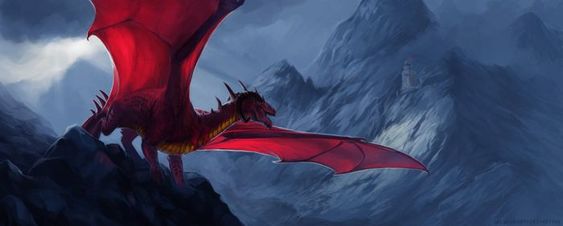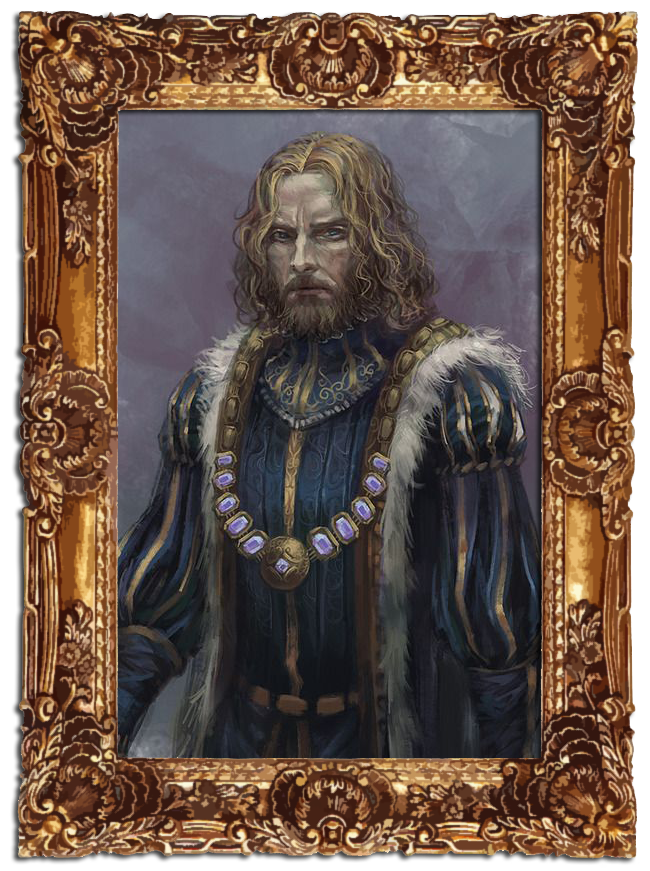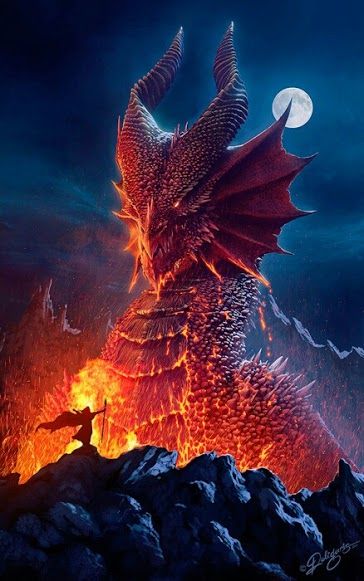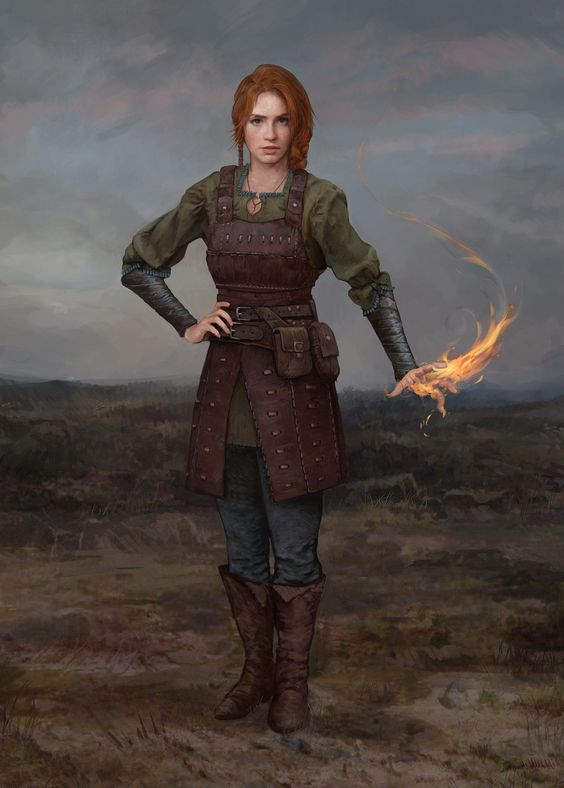Dragons
Emelia cowered in pantry doorway, one hand clutching at her skirts, as she attempted to breathe. The sounds of anger, of fire, of pain had long since died. The burn mark that had come from a narrowly missed ray of fire stung and throbbed with every frightened beat of her heart. Silence reigned as she tried to regain some semblance of posture. As she tried to force herself to remain calm. Quiet murmurs came from outside the door, forcing her to look up. Leon and Kieran looked over at her. Their eyes were wide, and their faces pale, as they stared at the shattered remains of the teapot that she had taken to the king's study.
Their fear made her steel herself.
They were too young to feel such panic. They were too young to be forced to learn to walk on eggshells.
But the King had been growing more furious as of late. He had begun to wield his innate magic like a weapon, just as much as his title and words. The screams of agony were routinely heard in the mornings, and smell of ash seemed to be a near ubiquitous waft from the courtyards and West Wing. Emelia prayed that he would forget her face. She was new. She didn't matter to him.
Such things had not stopped him from retribution before.
Emelia breathed out, and forced herself to carefully begin and pick up the shards of the pot from the tray. The teapot was beyond salvation, the pieces and shards too small to attempt to glue or mend back together. Emelia breathed out as she carefully lifted the small cup from the silver platter, placed it on the nearest counter-top, and then let the shattered remains fall into the rubbish bin. That was, of course, when she felt a tug on her skirts.
To her credit, she did not scream. To her credit, she did not strike out blindly with the tray. Thank each of the Gods of the Tree for her steady hand. For there, tugging on her outer skirts, was the bright eyed and golden haired Prince. Edmund's face was speckled with scales, like Emelia's brother's was scattered with freckles. His scales mirrored his father, the King's. Unlike his father, however, there was no fire in his eyes. No harsh heat that was breaths away from spilling out.
"Here, Lady Hawke," The Prince said, holding up the lone teacup with both hands. Unlike his father, he was well-dressed, without a hair or step out of place. Resembling his mother. Unlike his father, his touch was gentle as he handed the small cup over to her. He then stepped back, sure-footed and almost apologetic as he looked up at her.
There was a moment of hesitation, clear in his features before Prince Edmund smiled, "Mama and Lord Dowford sen me to request a change in the lunch schedule." His tone carried levity, though there was something almost serious in his five-year old gaze. So young...
"A-And thus you were sen--"
"Lord Father was approaching." There was a heaviness, there, in those words that made Emelia swallow.
"And what might the change be, your Highness?" She asked, keeping her posture straight and voice even. Prince Edmund smiled at her, at that, and she felt an almost giddiness fill her at the approval. Dragon-kin had influences over emotions, the Lady Jennifer had always told her. Be wary. Emelia had only ever thought that sway could be based in fear, since her recent appointment as Mistress of the Household. Not this softer emotion.
Emelia had to wonder if this charm and contentment had ever been present about King Edmund III. If the castle hadn't always been a place of fear and mute terror. She assumed that it had. Logically, she knew that it hadn't. But those gifted by the Bright Lord Xoddrem were a quarrelsome lot, guided by emotions. Passion that was often translated to anger. Thus, she could not help but fear them, just as she would have feared the Lord Xoddrem himself.
"Please arrive just an hour later," Prince Edmund said, "with boiling water for tea. Chamomile, Mother requested." Emelia found herself nodding, almost without thinking, to his words. With that, the Prince left.
With that, Emelia felt as though her world had once again realigned.
Be wary of those gifted with Dragon blood. Lady Jennifer had always said. Lest you burn yourself.
Emelia's hand burned in time with her heartbeat.
Basic Information
Anatomy
The Dragon Lord and Ladies of old were scaled beings of a variety of jeweled colors, with wings that could shade entire trades-quarters of cities. In length, they could encircle castles; in width, they were grander than most towers. Their claws could rip stone asunder, and their cries could be heard for miles. These beings of legends were challenged only by the Giants that ripped through the world of Orbem.
Biological Traits
There were reported to be multiple different types of dragons, though they typically came in two groupings: metallic and chromatic. Metallic variants came in gold, silver, bronze, and brass, with gold being the largest, and brass being the smallest. Chromatic variants included: red, blue, white, green, and black, with red being the largest, and green being the slightest built.
Genetics and Reproduction
Dragons most commonly laid broods with their own kind, typically of the same coloration. Chromatic dragons tended to lay more eggs then their metallic brethren, often leading to a relative scarcity of the metallic dragons. Dragons also had the ability to cross-breed with nearly any other creature that walked the world of Orbem. Most often, this was with humans and elves, though the offspring of the dragons and other Races of the Tree have been recorded in the legends and annals of history.
If not via cross-breeding, dragons were also capable of gifting magical capabilities to those whom they favored. This was done by a ritual that has since been lost to time, though those gifted in such a manner often showed the same characteristics as the draconic cross-breeds. Scales and claws are characteristic, and some legendary heroes are reported to have sprouted wings of the same color as their draconic patron.
Ecology and Habitats
The dragons were found across the world of Orbem, in a variety of habitats. Most of the differing races had a preferred habitat range, though they could easily traverse over most any environment, given their ability for flight. Multiple dragons, both metallic and chromatic, were known to have lorded over cities as either God-Kings or tyrants before the giants arrived.
Additional Information
Social Structure
The dragons that survived the fall of the Jotnar returned to a broken home and empire in ruins. From the ruins, they reclaimed their broken thrones. From these perches, they sought to lead a new race of beings. Thus marked the partnerships of the dragons with the race of Men. The dragons that guided this new race were viewed as gods by the humans; the shapers of fate. While some shied from these titles, others embraced them, and became known as the Architects of Kings. They took the mantle of deity and adviser, and were viewed above that of the kings themselves.
Geographic Origin and Distribution
The Dragon Lords and Ladies resided all over the world of Orbem, in almost all environments.
Average Intelligence
While this varied heavily with the dragon's type, the dragons were thought to have been some of the wisest creatures on the world of Orbem. Many ancient kings were known to travel to metallic dragons, begging for wisdom, so that they might solve their kingdoms' ills. Dragons were known to formulate novel forms of magic and castings, as easily as common scholars might record and write new books.
As a whole, the dragons were almost super-humanly intelligent, thanks in part, to their longevity. Most dragons hungered for knowledge, much like they hungered for riches. They would often enjoy or co-mingle with the Races of the Tree in order to obtain novel perspectives of the world that they helped to shape.
Perception and Sensory Capabilities
Dragons were known to have exceptional hearing, and were capable of seeing in the darkest of nights. It was commonly known that they tended to hunt by both sight and smell, when not pampered by those who deigned to treat them as gods.
Many dragons were also known practitioners of magic, beings of the arcane, capable of casting spells beyond most mages' wildest imaginings. It has been recorded that multiple dragons took human, Elven, and gnomish mages on as apprentices, fostering their magical abilities during the Age of Shaping. Many of these pupils became archmages in their own right, and led the land of Orbem into the further ages.
Civilization and Culture
Naming Traditions
Dragons are one of the few known species that tended to name themselves. They, like all of the Old Ones, placed a great value in names, and knew of the magic that a true name might hold. As such, they tended to add monikers and misnomers to their callings, as if by whim. The greatest sign of trust and honor that a dragon could provide or bestow to another being was to tell them their first given name.
Major Organizations
Long ago, there were churches and cults for each of the Architects of Man. However, with the rise of the Great Church, and the extinction of the draconic overlords, these cults fell into obscurity.
The House of Ashworth of Cador was the last of the Eliwyn-based Dragon-blessed houses, though it fell in the War of the Crown. The usurper, King Richard I, attempted to murder every branch of the house. Most blooded casters with Draconic blood fled Cador during this time, taking either to the New World, Yu Long, or the Zau'ber Empire.
The last of the Dragon House is the Empire of Yu Long, reportedly led by the Lord of Fire, Ymidayrth, the last of his kind to remain on Orbem. The red scales of his cross-breeds' descendants are characteristic of the noble echelons, and his blood-red fire is used to defend their borders.
Beauty Ideals
Most dragons tended to view members of their same coloration to be the most beautiful, though not all seemed to follow this train of thought. Many also found themselves to be fond of human and elven beauty, usually taking forms of the two races when they decided to walk in the guise of a humanoid. Again, however, this was not uniform. Xandolin the Bronze, the favored mate of the Lady of Brass, Cerlydir, was known to be fond of taking the guise of a similarly colored teifling, or horned humanoid. His appearance, a matter of contention amongst the Great Church, has been immortalized in etchings of golden monuments within the Brass city of Aljahim.
Gender Ideals
Male and female dragons were known to have viewed each other as equals, so long as they were of the same coloration, power, or age. A dragon of any gender could lay claim to a mortal population or land, so long as they were capable of defending it from trouble, or each other. Such was seen in the ruling of the City of Brass by the Lady of Brass, and in the Azarrkulian holdings of the Crimson Queen. Oftentimes, a dragon's might, size, and abilities were what led to their accumulation of power, rather than their gender.
Relationship Ideals
Draconic partnerships were common in the Age of Shaping, amongst the scattered few that remained. Typically, relationships were, by their nature, contradictory. They were simultaneously public, yet very private; intimate yet not monogamous; and slow-paced, yet driven deeply by passion. The smaller, or weaker of the two dragons was typically seen as the suitor for the more powerful counterpart, providing gifts and offerings that might catch the more prestigious partner's eye, though occasionally this commonality was flipped.
Some dragons also tended toward keeping non-draconic partners, often leading to numerous cross-breeds. The most notable of these was the Crimson Queen, Jessabol, who it was reported had a veritable harem of all Races of the Tree in her holdings. Most dragons, however, tended to look down on such partnerships, as they believed that the mortal races would never truly be capable of ever being an worthy for their draconic partner.
Major Language Groups and Dialects
The dragons of old spoke and taught in the language of Draconic. This language of magic, they shared with the men that they partnered with. It is still being spoken today, despite the dragons' extinction, as a language of power. This is especially true in the Kingdom of Cador.
Culture and Cultural Heritage
The Mad King of Cador carried the visual blessings of the Bright Lord's blood, and was the second to last ruler of Gravenwall. He was responsible for the deaths of more than 100 noblemen and women during the White Scare. He took his own civilians to the pyre in an attempt to rid Gravenwall of a perceived changeling threat. He died under mysterious circumstances, and was succeed by his twelve year old son, Edmund IV. Edmund IV, also gifted with the scales of the Bright Lord, ruled under the regency of Wayland of Dowford for only a few years before the War of the Crown started. He struggled to grasp the complexities of rule and was unable to fix the deteriorating state that his father had left the country in.
A Portrait of King Edmund III, the Mad King of Cador
History
The dragons were known as the architects of Kings. The Shapers of Orbem. They arose to power at the end of the Divine Wars, forming an empire than spanned over the whole of Orbem, after being exiled by the Gods. This empire thrived for an untold amount of years, and it remained stalwartly in power until the arrival of the giants. The Jötnar came to conquer the land of Orbem for their cosmic empire. With them, they brought the elves, and a before then unimaginable amount of destruction. The dragons were all that stood in the way of the giants' reign of blood and carnage. The dragons sought to protect the material and the lands that they had created. They sought to defend their homes from the invaders. For centuries, they fought, clashing with the Jötnar and their slaves countless times. However, eventually, the dragons were overrun. They lost, thus marking the Dragonfall.
Very few of the dragons survived the conflict with the Jötnar. Those that did live past the prolonged on-slot of the Jötnar returned to the lands that they once had held, after the decline and eventual disappearance of the empire that brought them to ruin. From the ruins, some of the dragons reclaimed their kingdoms, while others were said to have gone mad from the destruction and war. Those mad souls were said to have fled into the wilds of the world. It is thought that these wild few gave rise to the wyvrens and drakes, decrepit and desperate shells of what was once a proud race.
For those that remained on their civil perches, however, they found themselves acting as guiding advisers to a new race. The race of men came to prominence, and multiple dragons were quick to form close partnerships with these new groupings. Most of these returning dragons were viewed as gods by their human compatriots, worthy of worship and praise. While a select few shied from the deification, others embraced it. The most well known of these dragons to take the mantle of god was known as the Bright Lord Xoddrem, a golden dragon that helped to rule of the island that would become known as Cador.
Historical Figures
Huoa, the Lord of Fire, is the last of his kind to rule over one of the Houses of Orbem. He alone, continues to guide the sacred empire of Yu Long, far away from the Great Church's influence. His red scales are heralded on the nation's banner, and his words lead the country to prosperity.
Common Myths and Legends
It is said that the scale of a dragon can have magical properties, if wielded by a person with draconic blood. This is reported to be exceptionally true if the scale is of the person in question's draconic ancestor. The magical properties in question are said to vary from coloration and ancestral type, though they typically correlate to the element that the dragon itself was most attuned to. The Mad King of Cador was reported to have had multiple golden scales granted to his family by their patron, the Bright Lord.
"Our darling one, our dearest one
Sunshine; bright and brilliant.
Golden flamed,
A throne ne'er reclaimed
Thus darkness remains resilient.
Blessed, he was told
With gifts of old.
He travels through this world, transilient
But list' well, my child
Beneath scales and fire
Lie a King's curse and pyre
So he shall ne'er emerge resplendent."
-A Poem Heard in an Inn of Ravenfall
EXTINCT
The Crimson Queen in her Draconic Form
An Artistic Rendition of the Crimson Queen's Favored Human Form
Genetic Descendants
Origin/Ancestry
The Div
Lifespan
Unknown
Average Height
120 ft-150 ft
Average Weight
Up to 1,280,000 lb
Average Length
200 ft-250 ft
Average Physique
Most dragons were heavily muscled, though relatively slight of build. This was likely due to their extremely high metabolism, which was needed for their ability to fly. Their wingspan was typically equal to or greater than their body length, though this could fluctuate depending on the coloration of the dragon in question. Some of the races were known to have been better fliers than others, potentially attributed to this change in wingspan.
Remove these ads. Join the Worldbuilders Guild












Comments